Completed Projects
ALD process development of ternary and quaternary thin layers for transparent conducting oxides
Sub-project: Spectrsocopic characterization of IGZO layers
Brief description
The project focuses on the research and development of the atomic layer deposition (ALD) process of high-quality thin transparent conducting mixed oxides of the material class In-Ga-Zn-oxide (IGZO).
The quaternary IGZO material system is highly attractive for transparent electrodes in photovoltaics, LEDs, energy-efficient windows and in particular for thin film transistors in flexible or active matrix displays as well as for the low-cost paper electronic. For the fabrication of the oxidic thin films process and cost effective deposition techniques are required.
The usage of the ALD method for the deposition of thin IGZO layers offers one the one hand higher process controllability and on the other hand significant improvement of the layer homogeneity over large areas.
Firstly, the development of the ALD of IGZO layers will be based on investigations using existing systems and plasma sources to evaluate the principle functionality. In a next step, the new process system will be designed, constructed and built-up.
The layer homogeneity and the electronic and electrical properties of the deposited IGZO layers will be investigated.
Executor:
Chair of Applied physics / sensor technology
Brandenburg University of Technology Cottbus-Senftenberg
K.-Wachsmann-Allee 17
03046 Cottbus
Cooperation partner:
SENTECH Instruments GmbH
Schwarzschildstraße 2
12489 Berlin
Project manager:
Prof. Dr. Dieter Schmeißer (until 31.08.2018)
Dr. Karsten Henkel
Duration:
01.04.2018 - 15.02.2021
Index of advancement:
ZF4510602AG7
Promotional institution:
Federal Ministry for Economic Affairs and Energy in the framework of Central Innovation Programme for SMEs (ZIM)
Keywords:
Atomic layer deposition, transparent conducting oxides, IGZO
Oxygen Storage/ Thermo-physical modelling of oxygen storage in three-way catalysts
Brief description
The oxygen storage capacity (OSC) in three-way catalysts (TWC) is directly linked to ceria-based materials. Their ability to store and release oxygen can buffer fluctuations in the exhaust stoichiometry. Thus, the stoichiometry of the exhaust gas can be kept within the small target air-to-fuel-ratio window (λ-window) around λ = 1 even when engine stoichiometry switches from lean to rich or vice versa. This is a desired requirement for a simultaneous conversion of the three pollutants NOx, CO, and unburned hydrocarbons.
Materials providing OSC in TWC are ceria-zirconia solid solutions of type CexZr1-xO2-δ (0<x<1). A detailed understanding of the thermodynamic properties of oxygen incorporation in these materials is important for optimization of the oxygen storage and release performance. The oxygen storage and release ability depends on the Ce/Zr ratio (the x-value), the amount of oxygen in the bulk (the δ-value) as well as the relative content of Ce4+ and Ce3+. The change in Gibbs free energy associated with storage or release of oxygen (∆G(δ)) and the change of Gibbs free energy due to changes of the Ce/Zr ratio (∆GS(x)) are distinguished properties of the oxygen storage material. Once those values are known, the equilibrium constants of all oxygen storage and release reactions can be directly derived. Experimental methods for doing so are based on measuring the equilibrium O2 partial pressure.
The goal of the present project is to get a better understanding of how the equilibrium partial pressure of oxygen over oxygen storage materials can be measured and theoretically described. For that purpose, a series of tests on well-defined model-catalysts and industrial catalysts operated under idealized gas conditions as well as gas mixtures representing engine exhaust composition under realistic operation conditions will be performed. The knowledge gained will be incorporated into a model capable of depicting the dynamic behavior of a TWC. Said model can then be used for a better control of the TWCs performance and on-board diagnosis, benefitting car manufactures as well as engine control unit and catalyst supplies.
Executor:
Chair of Applied physics / sensor technology
Brandenburg University of Technology Cottbus-Senftenberg
K.-Wachsmann-Allee 17
03046 Cottbus
Project manager:
Prof. Dr. Dieter Schmeißer (until 31.08.2018)
Duration:
01.07.2018 - 30.06.2020
Index of advancement:
6013150/ Oxygen-Storage M2816
Promotional institution:
Forschungsvereinigung Verbrennungskraftmaschinen e.V. | Research Association for Combustion Engines
Keywords:
Three-way-catalyst, oxygen storage, emissions, cerium oxide, reaction kinetics, reaction equilibrium, simulation
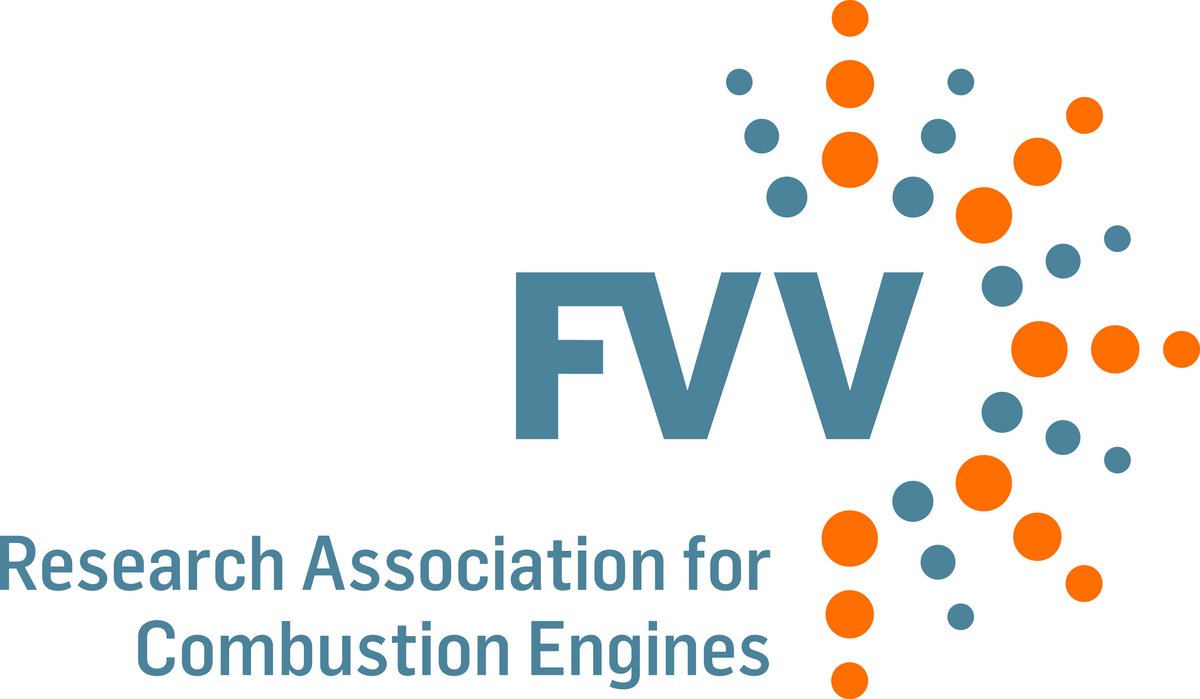
Novel simulation tools for the modeling of catalytic fixed bed reactors
Sub-project:Experimental verification of heterogeneous catalysis on the example of direct CO2 conversion to methan and methanol for the development of a simulation software
Brief description (only in German)
Im Rahmen der Energiewende müssen neue und innovative Konzepte für eine nachhaltige Energiespeicherung und -bereitstellung bei einer gleichzeitigen Lösung des CO2-Problems gefunden werden. Um der Herausforderung der fluktuierenden Verfügbarkeit von erneuerbaren Energien zu begegnen, sind der „Power-to-Gas“-Ansatz mit einer Synthese von Methan, andererseits aber auch der „Power-to-Liquid“- Ansatz mit einer Methanolsynthese hochaktuell. Beide Prozesse beruhen auf dem Einsatz von heterogenen Katalysatoren, deren Performance entscheidend in die Wirtschaftlichkeit der genannten Verfahren eingeht. Bei Verständnis der katalytischen Reaktionen ist eine Optimierung des Umsatzes, der Selektivität und der Ausbeute bei möglichst großer Lebensdauer möglich.
Das Konzept einer direkten Umwandlung der CO2-Komponente aus dem Rauchgas von z.B. Kohlekraftwerken, Raffinerien oder der Zementindustrie wird als neuartige Methode im Projekt untersucht. Die direkte Umwandlung hat den Vorteil, dass die Abtrennung des CO2 entfällt und z.B. Methanol als flüssige Phase abgetrennt werden kann. Bei der Methanisierung entsteht ein Gasgemisch, welches z. B. in einem Blockheizkraftwerk bei Bedarf wieder in elektrischen Strom umwandelbar ist. Somit würde das Anwendungsfeld für die CO2-Konvertierung zurück in Wertstoffe wie Methan oder Methanol deutlich erweitert.
LOGE Deutschland GmbH entwickelt im Rahmen des Projekts ein Softwaretool zur Modellierung der physikalischen Prozesse und chemischen Reaktionen im Katalysator. Der experimentelle Dateninput und die Verifizierung der Modellierung erfolgt durch den Lehrstuhl Angewandte Physik/Sensorik der BTU Cottbus-Senftenberg. Anhand des so erzielten Verständnisses der zugrundeliegenden Prozesse kann die Optimierung und Hochskalierung der o.g. Verfahren gelingen.
Executor:
Chair of Applied physics / sensor technology
Brandenburg University of Technology Cottbus-Senftenberg
K.-Wachsmann-Allee 17
03046 Cottbus
Cooperation partner:
LOGE Deutschland GmbH
Burger Chaussee 25
03044 Cottbus
Project manager:
Prof. Dr. Dieter Schmeißer (until 31.08.2018)
Dr. Klaus Müller
Duration:
01.04.2018 bis 31.03.2020
Index of advancement:
ZF4510601ZG7
Promotional institution:
Federal Ministry for Economic Affairs and Energy in the framework of Central Innovation Programme for SMEs (ZIM)
Keywords:
heterogeneous catalysis, CO2 conversion, direct CO2 conversion from flue gas, methanation
Process development of plasma enhanced atomic layer deopsition of nitride layers
Sub-project: Spectrsocopic, microscopic, and electrical characterization of PEALD nitride layers
Brief description
The project focuses on the research and development of the plasma enhanced atomic layer deposition (PEALD) of high-quality thin nitride films (AlN, TiN, SiN and GaN). These layers will be deposited on 4" and 8" substrates in a demonstrator ALD system which will be developed during the project.
Firstly, the development will be based on investigations using existing systems and plasma sources to evaluate the principle functionality. In a next step, the new process system will be designed, constructed and built-up.
Metal-organic precursors will be used. Their complex properties and technological manageability will be investigated and the deposited layers will be characterized.
The homogeneity of the layers on 4" and 8" substrates will be determined. The main focus of our works within the project is on spectroscopic, microscopic and electrical characterizations of the PEALD nitride layers deposited in the ALD system developed by SENTECH instruments GmbH.
Executor:
Chair of Applied physics / sensor technology
Brandenburg University of Technology Cottbus-Senftenberg
K.-Wachsmann-Allee 17
03046 Cottbus
Cooperation partner:
Sentech Instruments GmbH
Schwarzschildstraße 2
12489 Berlin
Project manager:
Prof. Dr. Dieter Schmeißer
Dr. Karsten Henkel
Duration:
01.03.2016 bis 28.02.2018
Index of advancement:
16KN033522
Promotional institution:
Federal Ministry for Economic Affairs and Energy in the framework of Central Innovation Programme for SMEs (ZIM)
Keywords:
Atomic layer deposition, nitrides, XPS, XAS, STM, electrical characterization
Fundamental and functional properties of ultra-thin oxide films grown by atomic layer deposition (ALD) studied in-situ by means of surface sensitive techniques (functional ALD, DFG, Schm745/31-1)
Brief description
We perform a systematic in-situ study of fundamental and functional properties of ALD growth using surface sensitive methods. We use ALD on substrates with regularly stepped surfaces held at various temperatures and characterize the occurrence and strength of surface diffusion by means of scanning microscopy. We determine the distribution of ALD nucleating sites as a function of substrate temperature and average terrace width, giving a quantitative estimation of diffusion for understanding its role in ALD. We apply the knowledge gained on regular surfaces to polycrystalline substrates in order to find the experimental conditions for depositing flat films also on complex surfaces. We apply standard ALD procedures to oxide substrates with different oxidation state and crystalline structure and characterise the film growth by means of Synchrotron radiation photoemission and absorption spectroscopy.
Substrate chemistry and structure modify growth and interface features depending on their reactivity towards the ALD precursor. We determine the distinct roles played by oxidation state and crystalline structure of the oxide substrates to tailor interface, substrate and ALD film functionalities upon choice of the appropriate supporting material and ALD parameters.
These studies will be done in-situ, using characterization methods with extreme surface sensitivity. Such a combination, unique at international level, has already proven to clarify unexpected properties of ALD.
Executor:
Department Angewandte Physik/Sensorik
Brandenburg University of Technology Cottbus-Senftenberg
K.-Wachsmann-Allee 17
03046 Cottbus
Project manager:
Prof. Dr. Dieter Schmeißer
Duration:
3 years (till 07.08.2016)
Index of advancement:
SCHM 745/31-1
Project number:
219438008 (GEPRIS)
Promotional institution:
Deutsche Forschungsgemeinschaft (DFG)
Keywords:
ALD, atomic layer deposition, in-situ charavcterization, XPS, XAS, STM

CO2-Methanation of flue gas
Executor:
Lehrstuhl Angewandte Physik II - Sensorik
Brandenburgische Technische Universität Cottbus
K.-Wachsmann-Allee 17 03046 Cottbus
Cooperation Partner:
Panta Rhei gGmbH
Konrad-Wachsmann-Allee 17
03046 Cottbus
Vattenfall Europe Generation AG
Herrmann-Löns-Straße 33
03050 Cottbus
Project manager:
Prof. Dr. Dieter Schmeißer
Duration:
05 / 2013 - 10 / 2015
Index of advancement:
03ET7002A
Promotional institution:
Federal Ministry for Economic Affairs and Energy (BMWi)
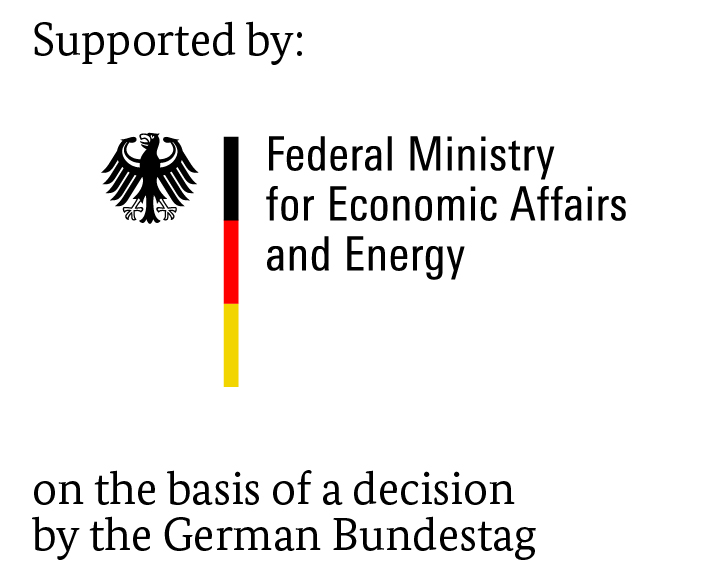


Investigation on the stability of Fe-N-C catalysts for the polmyer electrolyt membrane fuel cell (MWFK, EFRE, 80160676)
Brief desription (only in German)
Executor:
Lehrstuhl Angewandte Physik II - Sensorik
Brandenburgische Technische Universität Cottbus
K.-Wachsmann-Allee 17
03046 Cottbus
Project manager:
Prof. Dr. Dieter Schmeißer
Duration:
02 / 2014 - 12 / 2014
Index of advancement:
80160676
Promotional institution:
European Regional Development Fund (ERDF) in the management
of the Ministery for Science, Research and Culture (MWFK)
Promotional programme: "Wissens- und Technologietransfer für Ionnovationen"
Generell Information about "European Regional Development Fund (ERDF)"
www.efre.brandenburg.de
Keywords:
PEM fuel cell, CO2 emmission reduction, catalysis, oxygen reduction reaction (ORR)
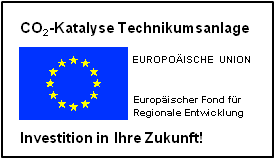
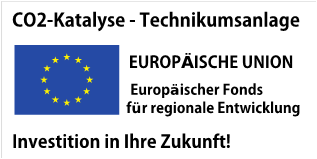
CO2-Catalysis pilot plant 2 (MWFK, EFRE, 80158343)
Executor:
Lehrstuhl Angewandte Physik II - Sensorik
Brandenburgische Technische Universität Cottbus
K.-Wachsmann-Allee 17
03046 Cottbus
Project manager:
Prof. Dr. Dieter Schmeißer
Duration:
09 / 2013 - 06 / 2014
Index of advancement:
80158343
Promotional institution:
Europäischer Fond für regionale Entwicklung (EFRE) in the management
of the Ministery for Science, Research and Culture (MWFK)
Promotional programme: "Hochschulinvestitionsprogramm"
Generell Information about "Europäischen Fonds für Regionale Entwicklung"
(European Regional Development Fund -ERDF)
www.efre.brandenburg.de
Keywords:
CO2, emmission reduction, CO2 reduction, catalysis, pilot plant


Development and conversion of the PE-ALD into a industrial useable method (BMBF, 03IN2V4A)
Executor:
Lehrstuhl Angewandte Physik II - Sensorik
Brandenburgische Technische Universität Cottbus
K.-Wachsmann-Allee 17
03046 Cottbus
Cooperation Partner:
Sentech Instruments GmbH
Schwarzschildstraße 2
12489 Berlin
Project manager:
Prof. Dr. Dieter Schmeißer
Duration:
07 / 2012 - 04 / 2014
Index of advancement:
03IN2V4A
Promotional institution:
Bundesministerium für Bildung und Forschung (BMBF)
"Zukunft des Technologietransfers in strukturschwachen Regionen - Modell-Hochschule BTU Cottbus"
Keywords:
Atomic Layer Deposition, Oxynitrides, TiO2, Plasma enhanced ALD
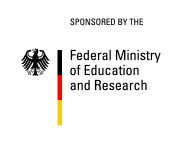

Writing graphene: Ion-beam modification of thin polymer layers
Brief description
We propose a radically new approach to graphene growth process. In contrast to exfoliation or surface layer reactions we will realize a "horizontal" graphene growth. Similar to carbon nanotubes, the graphene will gradually grow along (ab) plane. A single-monomer layer of polymer will be used as a precursor. The polymer will be converted into graphene layer by low-energy ion irradiation. The ion irradiation will be performed in a specially developed scanning mode. In analogy with zone melting, the ion beam will move gradually along the precursor film initiating graphene growth at the beam border. We expect that this procedure can provide large-area graphene films on different insulating substrates.
Atomic layer deposition of a monomer-thick polyimide films will be developed. Graphene growth will be investigated in-situ by X-ray spectroscopy (XPS, SR-XPS, XAS). Ex-situ, the obtained graphene films will be characterized by different microscopy techniques (STM, AFM, KPFM, PEEM). Electric transport properties of graphene films will be studied in details, including field effect and Hall mobility. PEEM and KPFM of field effect transistor structures will be used to investigate macroscopic homogeneity of our graphene films.
Executor:
Lehrstuhl Angewandte Physik II - Sensorik
Brandenburgische Technische Universität Cottbus
K.-Wachsmann-Allee 17
03046 Cottbus
Cooperation Partner:
Lehrstuhl für Experimentalphysik
Universität Erlangen-Nürnberg
Department of Physics
Erwin-Rommel-Str. 1
D-91058 Erlangen
Project manager:
Prof. Dr. Dieter Schmeißer
Prof. Dr. Paul Müller
Dr. Yuri Koval
Duration:
11 / 2010 - 11 / 2013
Index of advancement:
SCHM 745/23-1
Project number:
173836630 (GEPRIS)
Promotional institution:
Deutsche Forschungsgemeinschaft (DFG)
(DFG-Priority Programme, 1459 - Graphene)
Keywords:
Graphene, Ion Beam Modification, X-Ray Spectroscopy


CO2 Utilization: Carbon Cycling, CO2 catalysis (GeoEnergie: GeoEn II, BMBF, GeoEn- Homepage of the master project)
Executor:
Lehrstuhl Angewandte Physik II - Sensorik
Brandenburgische Technische Universität Cottbus
K.-Wachsmann-Allee 17
03046 Cottbus
Project manager:
Prof. Dr. Dieter Schmeißer
Duration:
01 / 2011 - 08 / 2013
Index of advancement:
03G0767B
Fördernde Institution:
Bundesministerium für Bildung und Forschung (BMBF)
Spitzenforschung und Innovation in den Neuen Ländern (homepage)
(Projekt-Homepage)
Keywords:
CO2, emmission reduction, CO2 reduction, catalysis


Advanced research and innovation in the New StatesSpitzenforschung und Innovation in den Neuen Ländern
CO2-Catalysis pilot plant (MWFK, EFRE, 80149806)
Executor:
Lehrstuhl Angewandte Physik II - Sensorik
Brandenburgische Technische Universität Cottbus
K.-Wachsmann-Allee 17
03046 Cottbus
Project manager:
Prof. Dr. Dieter Schmeißer
Duration:
10 / 2011 - 06 / 2013
Index of advancement:
80149806
Promotional institution:
Europäischer Fond für regionale Entwicklung (EFRE) in the management
of the Ministery for Science, Research and Culture (MWFK)
Promotional programme: "Wissens- und Technologietransfer für Innovationen"
Generell Information about "Europäischen Fonds für Regionale Entwicklung"
(European Regional Development Fund -ERDF)
www.efre.brandenburg.de
Keywords:
CO2, emmission reduction, CO2 reduction, catalysis, pilot plant (Technikum)

Modular Armor Structur Health Guard
Executor:
Lehrstuhl Angewandte Physik II - Sensorik
Brandenburgische Technische Universität Cottbus
K.-Wachsmann-Allee 17
03046 Cottbus
Cooperation Partner:
Lab microelectronic GmbH
Große Heide 17 - 21
32425 Minden
Project manager:
Prof. Dr. Dieter Schmeißer
Duration:
01 / 2011 - 12 / 2012
Index of advancement:
KF2394107DB0
Promotional institution:
Bundesministerium für Wirtschaft und Techniologie
AiF

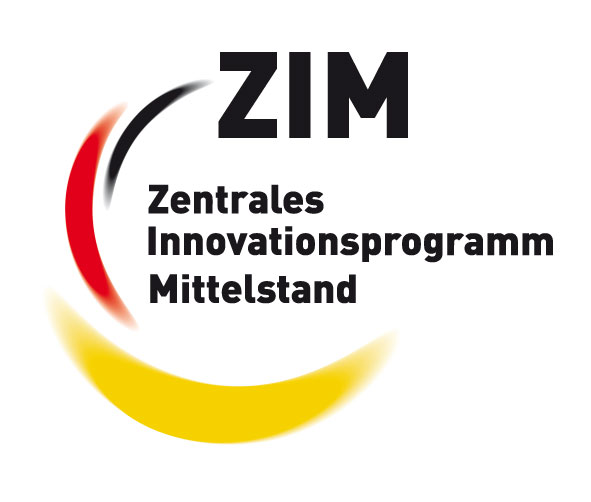
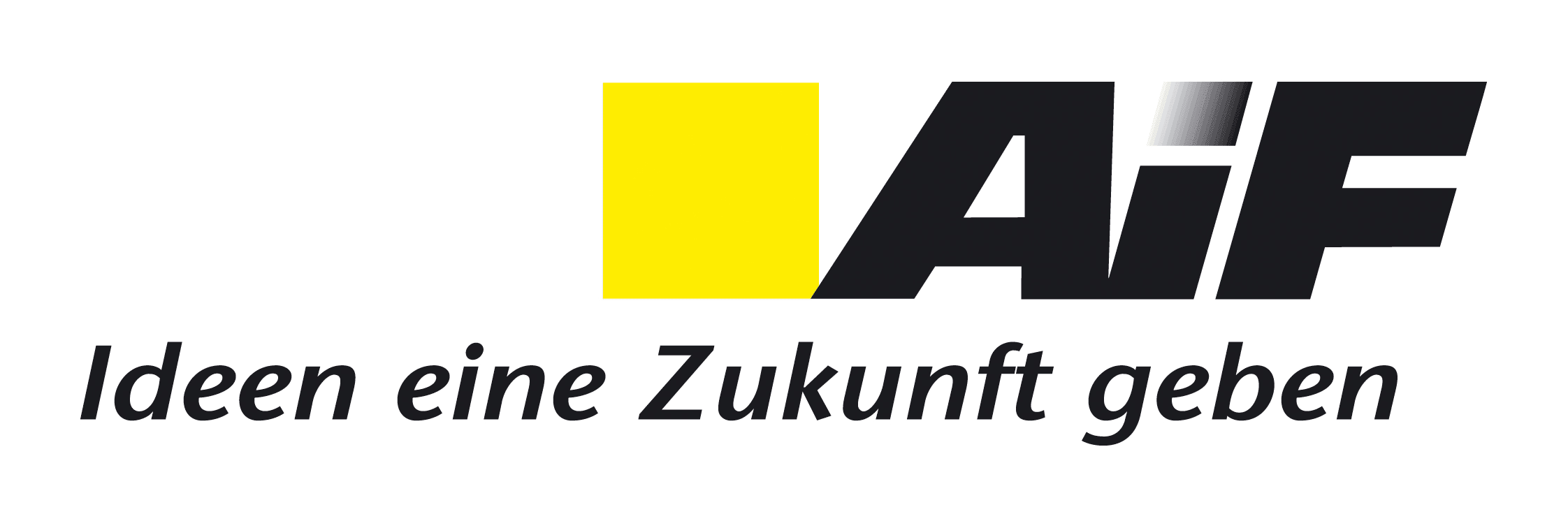
Efficiency Improvement of graphitization of thin polyimide layers (MWFK, F 111-02-BTUC/00)
Executor:
Lehrstuhl Angewandte Physik II - Sensorik
Brandenburgische Technische Universität Cottbus
K.-Wachsmann-Allee 17
03046 Cottbus
Project manager:
Prof. Dr. Dieter Schmeißer
Duration:
09 / 2010 - 12 / 2011
Index of advancement:
F 111-02-BTUC/00
Promotional institution:
MWFK
Keywords:
Graphene, Ion Beam Modification
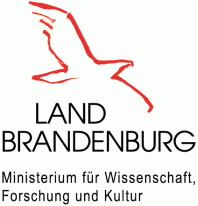
SESECA: Synchrotron-Electron Spectroscopy for electrochemical Analysis (BMBF, 05KS7IC1)
Executor:
Lehrstuhl Angewandte Physik II - Sensorik
Brandenburgische Technische Universität Cottbus
K.-Wachsmann-Allee 17
03046 Cottbus
Project manager:
Prof. Dr. Dieter Schmeißer
Duration:
07 / 2007 - 12 / 2010
Index of advancement:
05KS7IC1
Promotional institution:
Bundesministerium für Bildung und Forschung (BMBF)
Keywords:
Near-Edge X-ray Absorption Fine Structure spectroscopy (NEXAFS), X-Ray fluorescence

Establishment of a post gradual Master study course Physics of Semiconductor Technology
Executor:
Brandenburgische Technische Universität Cottbus
Postfach 101344
03013 Cottbus
Project manager:
Prof. Dr. D. Schmeißer
Duration:
02 / 2008 - 12 / 2010
Index of advancement:
1027795
Promotional institution:
Ministerium für Wissenschaft, Forschung und Kultur des Landes Brandenburg (MWFK)
aus Mitteln des Europäischen Sozialfonds (ESF)
www.esf.brandenburg.de
Keywords:
post gradual, Master study courcs, Monday master
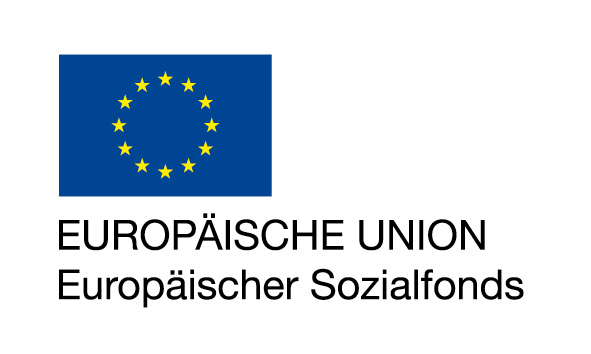

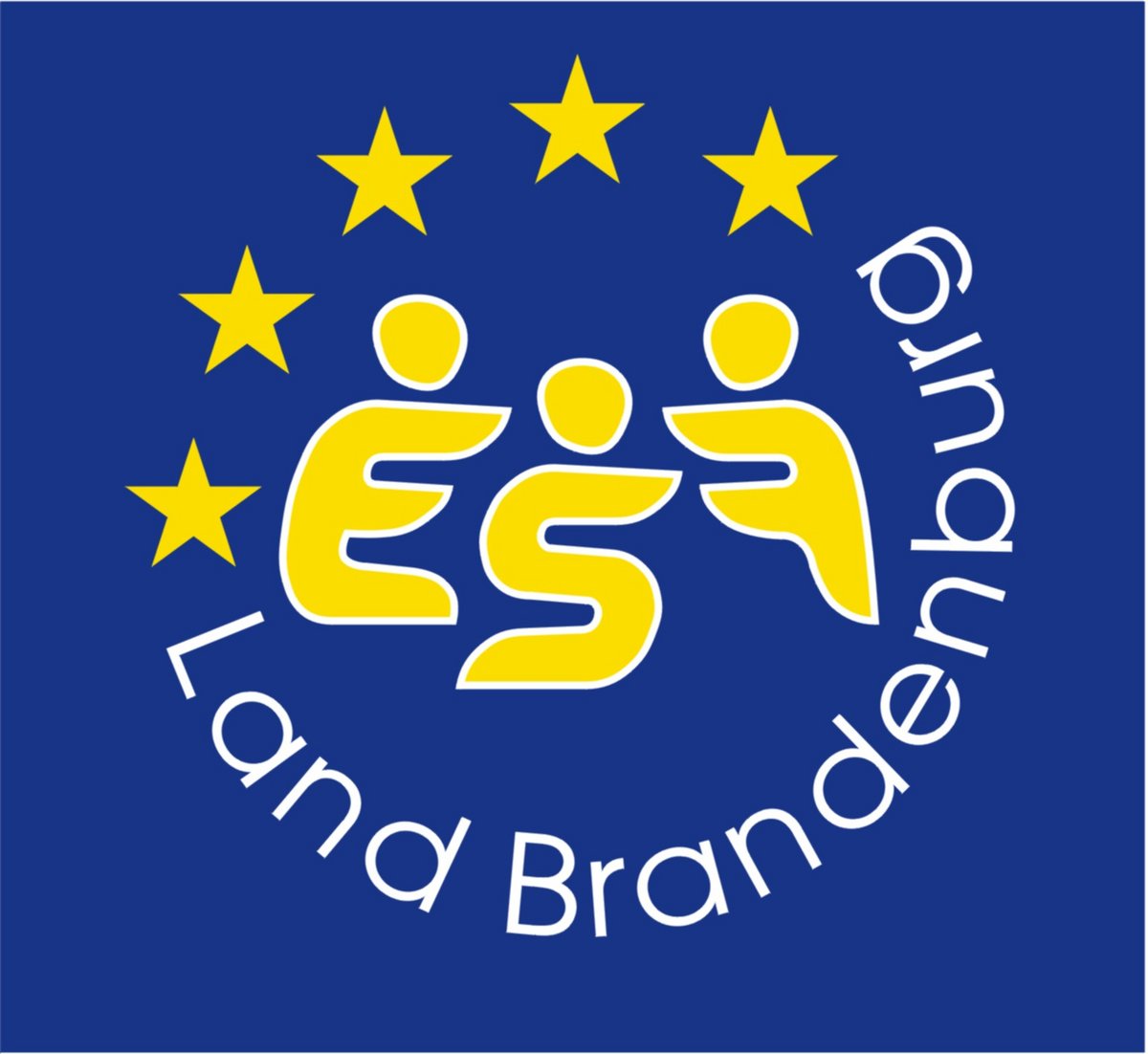
Nano analytics: NEXAFS Investigations for the calibration and quantification of EF-TEM analytics
Executor: (sub-order)
Lehrstuhl Angewandte Physik II - Sensorik
Brandenburgische Technische Universität Cottbus
K.-Wachsmann-Allee 17
03046 Cottbus
Cooperation Partner:
AMD / Globalfoundries Dresden
Wilschdorfer Landstraße 101
01109 Dresden
Project manager: (sub-order)
Prof. Dr. Dieter Schmeißer
Duration:
07 / 2007 - 06 / 2010
Index of advancement:
13N9431
Promotional institution:
Bundesministerium für Bildung und Forschung (BMBF)
Keywords:
Near-Edge X-ray Absorption Fine Structure spectroscopy (NEXAFS)

Pr-O-N-Layers: Dielectrics for 4H- and 3C-SiC surfaces
Brief description:
Rare-Earth-Hetero-Oxides (Praseodymiumoxide/Oxinitride) are grown on 4H- and 3C-SiC surfaces and their interface characteristics are optimised for electronic applications.
SiC possesses intrinsic characteristics which seems to be suitable to be semiconductor material for high frequency electronics, power devices or high-temperature devices (sensors). Up to now SiC device development is impeded because "native" oxides on SiC do not form ideal interfaces and so there is a high density of interface states observed by xps and electrical measurements. If it is possible to find suitable dielectrics with useful interface properties SiC can be used for applications requiring electronic characteristics like high saturation velocity or high breakdown field strength as well as chemical and mechanical stability.
By using a functional Hetero-Oxide the interface characteristics of 4H- and 3C-SiC surfaces can be optimised. The structure of this Hetero-Oxide starts with an Oxynitrid layer (2nm) in which nitrogen in low concentration passivates interface states. Praseodymium Oxide is reactive at the interface forming the silicate phase.The dielectric characteristics of Hetero-Oxides are defined mainly by the Dielectric Constants of the Rare-Earth-Oxide.
A spectroscopic method of non-destructive interface analyses is used for investigating and adjusting the atomic composition of the heterogeneous interfaces (<3nm). In this method a variable excitation energy of a beam line at BESSY is used. Electrical characteristics are only checked on MOSiC-Diodes.
Executor:
Lehrstuhl Angewandte Physik II - Sensorik
Brandenburgische Technische Universität Cottbus
Postfach 101344
03013 Cottbus
Project manager:
Prof. Dr. D. Schmeißer
Duration:
10 / 2003 - 09 / 2005
10 / 2005 - 09 / 2007
10 / 2007 - 09 / 2008
Index of advancement:
SCHM 745/9-1
SCHM 745/9-2
SCHM 745/9-3
Project number:
5413106 (GEPRIS)
Promotional institution:
Deutsche Forschungsgemeinschaft
(DFG-Schwerpunktprogramm 1157 - Integrated Electroceramic Functional Structures)
Keywords:
power devices, sensors, interface states in SiC spectroscopy at hidden interfaces, XPS, AFM

Functional materials for nano electronics - Praseodymium oxide as dielectric on silicon and silicon carbide
Brief description:
Dielectrics play a key role in semiconductor technology. In the first place they are used to realize insulating layers, and second they are forming the dielectric in capacitor structures. In this application it is wishful to have a possibly high dielectric constant due to the fact, that this allows a constant capacity in a smaller area of the capacitor structures in the course of the progressing miniaturization. This is an imperatively necessary strategy for the future as losses of capacity at miniaturization can not be adjusted by thinner SiO2-films. A film-thickness of 2 nm shows a physical limit (tunnel currents). Praseodymium oxide (Pr2O3) is seen as a promising candidate to replace the, up to now, predominant SiO2. With its comparatively high dielectric constant of 40 this means an improvement of the factor ten compared with SiO2 (ε =3.9) . These facts speak for Pr2O3 as the replacement dielectric on silicon.
However some fields exist, in which the semiconductor itself ( in this case silicon) has to be replaced by a more suitable material. A development of topical interest is to use SiC as replacement for Si. This is especially the case in the field of power electronic and sensors (and particularly for high temperatures).
Electrical properties (for instance density of interface states and dielectric constant) as well as chemical properties (for example stability at high temperatures and avoidance of silicide formation) of the dielectrics in interaction with the substrate (Si, SiC) have to be optimized. This requires a fundamental investigation of materials with suitable methods for it.
In this context the distinguished surface analytic method of photo electron spectroscopy (PES) with synchroton radiation finds its mission. This method is provided by the Chair of Applied Physics II at BTU Cottbus through its own Beamline at BESSY-II in Berlin/Adlershof in cooperation with BESSY. With this method a deep chemical image of ultra thin layers (<10nm) is possible aided by variably X-ray excitation energies.
Executor:
Lehrstuhl Angewandte Physik II - Sensorik
Brandenburgische Technische Universität Cottbus
Postfach 101344
03013 Cottbus
Project manager:
Prof. Dr. D. Schmeißer
Duration:
2004 - 2006
Promotional institution:
HWP Forschungsprojektförderung (MWFK)
Keywords:
power devices, sensors, interface states in SiC spectroscopy at hidden interfaces, XPS, AFM

Investigations of ultra-thin Pr2O3 films on Si(111) by XSW/XPS measurements
Executor:
Lehrstuhl Angewandte Physik II - Sensorik
Brandenburgische Technische Universität Cottbus
Postfach 101344
03013 Cottbus
Project manager:
Prof. Dr. D. Schmeißer
Duration:
second half of 2005
Promotional institution:
ESRF (The European Synchrotron Radiation Facility)
Organic ferroelectric layers for non volatile memories
Brief description:
In this project we will investigate organic ferroelectric layers for non volatile memories like in MFIS (metal - ferroelectric- insulator - semicoductor) structrues. We will characterise the interface properties between a functional organic layer and the surface of a dielectric layer. This will be done in the system P(VDF/TrFE) / SiO2 but also the use of Pr2O3 as a substitute of SiO2 will be analysed. The basic questions in respect to an ideal interface between two insulators are:
- chemical stability (reaction products, oxygen diffusion),
- pontential distribution (distribution along the interface, space-charge regions, abrupt interfaces, band edges perpendicular to the interface), and
- chemical arrangement in the functional layer or disturbance of this arrangement by the interface
In the focus of nonvolatile memory element we will investigate:
- ferroelectrical hysteresis
- response time
- data retention
We will also check the transferability of the results to other polymer insulator interfaces as well as the application of high-k buffer layers in anoranic ferroelectric structrures.
Executor:
Lehrstuhl Angewandte Physik II - Sensorik
Brandenburgische Technische Universität Cottbus
Postfach 101344
03013 Cottbus
Project manager:
Prof. Dr. D. Schmeißer
Duration:
10 / 2005 - 09 / 2007
10 / 2007 - 05 / 2009
Index of advancement:
SCHM 745/11-1
SCHM 745/11-2
Project number:
16317949 (GEPRIS)
Promotional institution:
Deutsche Forschungsgemeinschaft
(DFG-Priority Program 1157 - Integrated Electroceramic Functional Structures)
Keywords:
non volatile memory, P(VDF/TrFE), FeFET

Spectroscopic and microscopic characterisation of interfaces in organic field effect transistor layer structures: roughness, reactivity and potential variation
PEEM and Kelvin-AFM investigations on dielectric layers for organic field effect transistors
Brief description:
First there is a methodical development of spectroscopic characterisation of interfaces in organic field effect transistor layer structures. In focus of interest are the influences of roughness and reactivity. After finishing the characterisation a comparison with well-defined samples between two methods follows. Both methods enable a visualisation of potential gradients within the channel between source- and drain-electrodes. For this Micro-Kelvin and PEEM are used.
AFM and PES are used for characterising interfaces in OFET layer structures. Roughness on the interface between semiconductor and dielectrics as a result of production parameters is checked. Noticed roughness is correlated with these production parameters. The aim is to get the surfaces as smooth as possible and to determine and optimise the influence of interface roughness on electric characteristics of construction elements. Another aim is to learn, to what extent roughness and reactivity are a limit to characteristic electrical data of all-polymer elements. Here it must be figured out whether given steps in the fabrication process are limiting the performance.
PES will be used for controlling the chemical stability at the interfaces. By varying the depth sensitivity analysises can be done on hidden interfaces, as long as thicknesses of isolation layers are thinner than 2 nm.
After a successful optimisation of materials and preparation conditions potential distribution between source- and drain-electrode above source-drain-channel can be imaged with Micro-Kelvin and PEEM.
Executor:
Lehrstuhl Angewandte Physik II - Sensorik
Brandenburgische Technische Universität Cottbus
Postfach 101344
03013 Cottbus
Project manager:
Prof. Dr. Dieter Schmeißer
Duration:
04/2003 - 03/2005
06/2005 - 05/2007
Index of advancement:
SCHM 745/8-1
SCHM 745/8-2
Project number:
5404550 (GEPRIS)
Promotional institution:
Deutsche Forschungsgemeinschaft
(DFG-Priority programme 1121 - Organische Feldeffekt-Transistoren: strukturelle und dynamische Eigenschaften)
Keywords:
XPS, AFM,PEEM potential distributions

Multi-spectral cell with ZnS-CuInS2 alloys
Brief description:
The morphology, geometrical and electronical structure of in-situ prepared layers of Cu-In-S, influenced by annealing and evaporation of copper, indium and zinc sulphide is investigated. The exploration of these reaction processes is necessary for gaining information about the preparation conditions for homogenous and stochiometric layers of CuInS2 and mixed crystals of ZnS-CuInS2 with a controlled band gap. For investigating this, spectroscopic and micro spectroscopic methods are used.
Executor:
Lehrstuhl Angewandte Physik II - Sensorik
Brandenburgische Technische Universität Cottbus
Postfach 101344
03013 Cottbus
Project manager:
Prof. Dr. Dieter Schmeißer
Index of advancement:
SCHM 745/3-1
Project number:
5223566 (GEPRIS)
Promotional institution:
Deutsche Forschungsgemeinschaft (DFG)

Defect states in WO3
Detection of aerosols by quartz microbalances and their dynamic response characteristic (AiF, Aerosole 2)
Brief description:
New medical findings show hygienic effects of particles in the air to human being. So the prescriptive limits of such particles have been reduced by several laws. In the conjunction with these facts there is a need for low cost measurement systems for such particles (aerosol, dust).
In this project we will investigate the detection of particles with diameters smaller than 10µm with the method of quartz microbalances (QMB). Compared to the conventional method of the QMB (mass detection by frequency measurement), here we want to use network analysis to measure also at higher harmonics and to determine the damping of the measuring crystal system. In this way we like to get even more information about the dynamics of the processes and to use them for data analysis. Hereby we focus on contact phenomena as well as on the influence of physical properties of aerosol (viscosity, dew point) and of the measurement conditions (temperature, flux). We want to use the results of these investigations to distinguish different aerosols (constitution, properties).
Executor:
Lehrstuhl Angewandte Physik II - Sensorik
Brandenburgische Technische Universität Cottbus
Postfach 101344
03013 Cottbus
Project manager:
Prof. Dr. Dieter Schmeißer
Cooperation partners:
Institut für Luft- und Kältetechnik gGmbH
Bertolt-Brecht-Allee 20, 01309 Dresden
Fanalmatic Gesellschaft für Umwelttechnik und Industrieautomation mbH
Köthener Straße 1a
06369 Weisandt-Gölzau
Duration:
05/2002-10/03
Index of advancement:
AiF KF 0342201KFK1
Promotional institution:
Bundesministerium für Wirtschaft und Technologie (BMWi / AiF)
Keywords:
quartz micobalance, aerosol
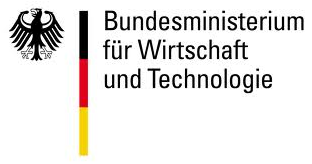

Detection of Particles and Drops in μm-range (AiF, Aerosols 1)
Brief description:
The scope of this work is to develop a method for measuring particles and liquid drops in the range smaller than 10 µm using quartz micro balances. This measurement should cover the range of low dust concentrations to detection of single particles.
Developing this measurement is a reaction on the current situation resulting from new laws and knowledge about pathogenic effect of dust particles.
Until now there is no measurement which is cheap enough for further controls and tests.
The most important aims for this project are:
- Developing a measurement method for dust and particles in range smaller than 10 µm, based on quartz micro balances. This allows quasi-gravimetric and real-time measurements because this method is based on resonance-frequency shifts caused by the mass of particles segregated on the oscillating quartz.
- Widening the detection of particles by quartz micro balances to drops and developing the measurement for proving evaporation of separated drops or hygroscopicity of separated particles.
- Realising a modular functional model for the new measurement and proving the function compared to other measure possibilities.
Executor:
Lehrstuhl Angewandte Physik II - Sensorik
Brandenburgische Technische Universität Cottbus
Postfach 101344
03013 Cottbus
Project manager:
Prof. Dr. Dieter Schmeißer
Cooperation partners:
Institut für Luft- und Kältetechnik gGmbH
Bertolt-Brecht-Allee 20
01309 Dresden
Duration:
11/2006-01/09
Index of advancement:
15008 BR
Promotional institution:
Bundesministerium für Wirtschaft und Technologie (BMWi / AiF)
Keywords:
quartz micobalance, aerosol, network analysis


Strain gauge based on polymer foils
Executor:
Lehrstuhl Angewandte Physik II - Sensorik
Brandenburgische Technische Universität Cottbus
Erich - Weinert - Straße 1
03046 Cottbus
Project manager:
Prof. Dr. D. Schmeißer
Cooperation partners:
Fraunhofer-Institut für Angewandte Polymerforschung
Kantstraße 55
14513 Teltow
Thyssen Umformtechnik Leichtbau Entwicklungs GmbH
August-Thyssen-Straße
14974 Ludwigsfelde
Duration:
10 / 98 - 09 / 2000
Index of advancement:
03N5020 9
Promotional institution:
Bundesministerium für Bildung, Wissenschaft, Forschung und Technologie (BMBF)
Keywords:
strain gauge

Sensor materials and sensors for specific detection of sulphurous and nitrogenous substance groups
Brief description
A sensor should be developed which allows the cheap detections of sulphur and nitrogen containing chemical compounds. A new type of sensors for analysing gas mixtures are mass sensitive quartz micro balances. Analytical gases can be proved by gas adsorption on the sensors polymer surface. This adsorption leads to a mass increasing of polymer film which causes a changing of resonance frequency. For selective defining of sulphurous and nitrogenous gas molecules chemical resistant polymers have to be found and optimised according to demands. This new sensors can be used for proving sulphurous and nitrogenous gaseous substances at low temperatures (20 ° - 100 ° C). Among developing long termed solid polymer layers, sensor relevant dates like sensitivity to the gases, signal stability, drift and respond behaviour have to be characterised and optimised.
Project manager:
Dr. Födisch
Project partner:
Dr. Födisch Umwelttechnik GmbH
Duration:
02/99 - 12/2000
Promotional institution:
Bundesministerium für Bildung, Wissenschaft, Forschung und Technologie (BMBF)
Keywords:
sensor materials

Sensorarrays for specific detection of environmental and animal physiological relevant components
Brief description
Selective sensors for gas determination should be combined for measuring concentration and composition of gas mixtures. One of the target groups for this project is agricultural intensive breeding. In stables there are a lot of problems with optimising air quality because of raising and fattening conditions used at present. Air in stables enriches with ammonia, carbon dioxide, carbon monoxide, nitrous oxide, methane gas and hydrogen sulphide. Because of cheap analysis of air in stables the pollutant concentrations of ammonia, carbon dioxide and hydrogen sulphide demanded by laws can be supervised and controlled by ventilation. Furthermore odour emissions and concentrations of pollutants have to be considered. Developing a neuronal net ("intelligent net") which connects environmental and animalphysiological relevant components like atmospheric humidity, nitrous oxide, ammonia, amines, hydrogen sulphide, mercaptanes, methane gas, carbon monoxide, carbon dioxide and oxygen quantitative states about concentration and kind of gas in the mixture can be given. Necessary for this system are mass sensitive, selective quartz micro balances based on specially coated polymers.
Project manager:
Dr. Födisch
Project partner:
Dr. Födisch Umwelttechnik GmbH
Duration:
02/99 - 12/2000
Promotional institution:
Bundesministerium für Bildung, Wissenschaft, Forschung und Technologie (BMBF)
Keywords:
sensor array

Sensors with micro structered polymeric electrodes - Polymelek
Brief description (final report)
The aim of this work was the use of polymer coated quartz microbalances for monitoring of hydrocarbon concentrations in textile cleaning machines and at working places around such machines.
We report about the setup and the mode of operation of a prototype of a workroom sensor. The best results as hydrocarbon sensitive layer on conventional quartzes (silver or gold electrodes) shows poly[tetradecylmethylsiloxane] (PTDMS). The PTDMS deposited quartz behave nearly linear in a range of 10 up to 1200 ppm with high sensitivity and short time constant (some seconds). So such a system is able to response quickly to oversteps of the maximum concentration of the workplaces (MAK). The sensitivity and stability increase while reducing the temperature up to room temperature. Humidity, type and flux of the carrier gas have only small influences.
The properties of the conducting polymer polypyrrole and its modifications are extensive discussed.
We present attempts to realise polymeric electrodes with this material and results of quartz microbalances having polypyrrole electrodes prepared by electropolymerisation. They showed resonance frequencies around 10 MHz, which fluctuated only 4 hertz in 57 hours and were sensitive against hydrocarbons and humidity but specially against nitrogen dioxide and the gas flux.
So we demonstrate for the first time the facility to use polypyrrole in the same time as the electrode material
Executor:
Lehrstuhl Angewandte Physik II - Sensorik
Brandenburgische Technische Universität Cottbus
Postfach 101344
03013 Cottbus
Project manager:
Prof. Dr. Dieter Schmeißer
Project partners:
Institut für Physikalische und Theoretische Chemie der Universität Tübingen
Bekleidungsphysiologisches Institut Hohenstein
Institut für Angewandte Physik der Technischen Universität Dresden
Fa. Böwe-Passat in Augsburg
Fa. Geosys in Leipzig
Fa. Dr. Födisch Umweltmeßtechnik GmbH in Kulkwitz
Duration:
10/96 - 09/99
Promotional institution:
Bundesministerium für Bildung, Wissenschaft, Forschung und Technologie (BMBF)
Keywords:
Polymelek

Forming technolgy of rolling products of magnesium alloys
Project manager:
Prof. Dr. D. Schmeißer
Project partners:
TU Bergakademie Freiberg
BTU Cottbus, LS Konstruktion und Fertigung I
BTU Cottbus, LS Allgemeine Werkstofftechnik
TULE GmbH, Ludwigsfelde
Volkswagen AG, Wolfsburg
Duration:
10 / 98 - 03 / 2000
Promotional institution:
Bundesministerium für Bildung, Wissenschaft, Forschung und Technologie (BMBF)
Keywords:
magnesium alloys

Magnesium alloysForming assembling technolgies for bonding of aluminum and steel Steel & Al
Project manager:
Dr.-Ing. Jörg Rauer
Project partners:
BTU Cottbus, LS Konstruktion und Fertigung I
BTU Cottbus, LS Allgemeine Werkstofftechnik
TULE GmbH, Ludwigsfelde
Duration:
10 / 98 - 09 / 2001
Promotional institution:
Bundesministerium für Bildung, Wissenschaft, Forschung und Technologie (BMBF)
Keywords:
aluminium, steel


